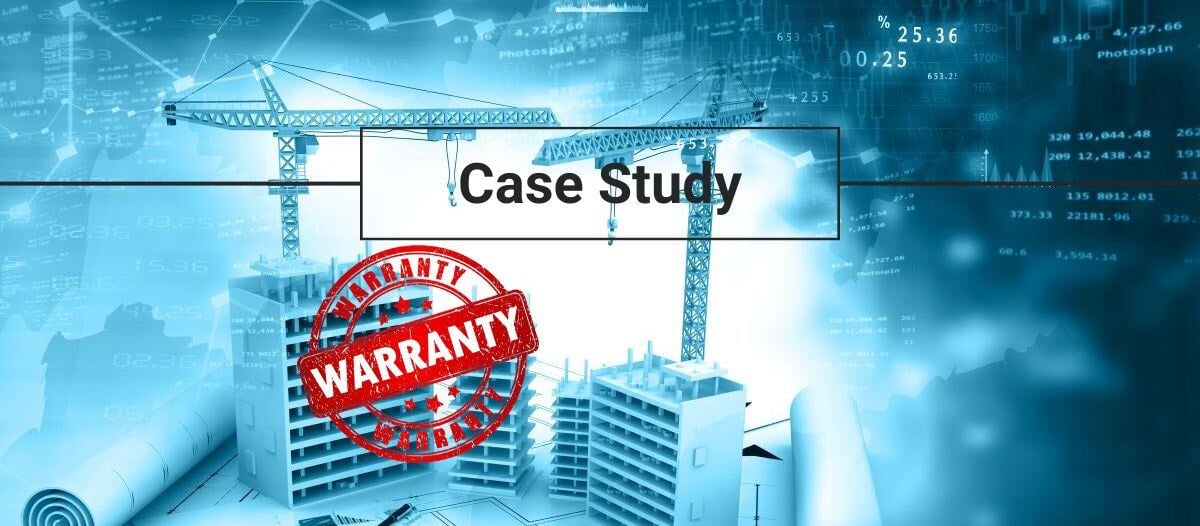When Right Now Comes
Embracing "just-in-time" principles

The problem is that implementing JIT requires both timely and accurate information and the commitment and cooperation of every stakeholder involved in the provision of a product. That is relatively simple to do when there are a limited set of data points. If a company knows that demand for a toy is likely to spike in December and the toy takes a month to manufacture and ship, ramping up production in October is a no-brainer. But, when they are supplying several products to thousands of delivery points for a consumer whose needs can fluctuate by the minute, collecting, managing and acting on the resulting data is more difficult. Such is the challenge faced by facility managers in applying a JIT mindset to delivering comfortable, functional and productive workplaces.
Only recently has technology, including workplace management solutions, advanced to the point where this is even feasible. Sophisticated sensors and workplace software platform have made it possible to reduce waste and costs, support sustainability initiatives, increase efficiency and provide superior insights to deliver high-performing buildings for occupants - based on what they need, when they need it.
In real estate, the areas where JIT tenets could be most impactful include provision of light, water and climate control, space management, maintenance and guest access.
Light, water & climate control
It is no longer sufficient just to supply a building’s occupants with light, water and climate control. Employees today understand how, when and where those amenities can contribute to climate change and impact their wellbeing and productivity. That awareness, in turn, has made how lights work, toilets flush and AC functions a factor in talent retention and recruitment. FMs can deliver these basic-but-essential resources in a way that checks all these boxes while reducing costs, by using automation to make them available just when they are needed.
The first step in automating the provision of light, water and climate control is to install the appropriate sensors. Workplace occupancy sensors can detect environmental conditions, like light, temperature, humidity, noise and CO2 levels. Because these sensors reveal real-time environmental and occupancy data, organizations can use this level of data in conjunction with building management system (BMS) and building automation system (BAS) integrations to optimize energy usage. For example, these systems can turn off the lights in parts of the building that are unoccupied or increase airflow to meeting rooms or certain levels of a building on days and times that consistently show higher levels of occupancy They can even be used with automated shading systems to alleviate solar heat gain.
Modern BAS provide an enormous amount of data to facility teams about their operations. Sensor-based technologies, such as smart meters, can be attached to building assets, from rooftop chillers to printers, allowing organizations to track the performance of equipment and gain insights into their energy consumption over time.
While many smart building systems focus on realizing energy savings, water also costs money, and its conservation is an important element in any sustainability initiative. With the help of smart water sensors and meters, building management and automation systems can also monitor and control water waste and leakage in restrooms, office kitchens and HVAC and irrigation systems.
Optimizing the delivery of climate control, water and light is a win-win for the organization and the occupants. Providing just the right amount of these resources, in just the right places and at just the right times, not only reduces costs and waste but also increases productivity by making the workplace healthier and more inviting for employees. It also enhances sustainability by decreasing energy and water usage. Finally, using automation to control the provision of light, water and climate control boosts talent retention and recruitment by enabling organizations to tout their commitment to sustainability efforts and climate-aware policies.
Space management
Many employers have turned to hybrid work arrangements so employees can work in ways that are most effective for them, and ultimately create a culture of increased employee satisfaction, productivity and overall retention. In doing so, organizations prioritize optimizing their workplaces to match the way their people work best while identifying and eliminating unnecessary costs. One way to achieve these objectives is to ensure employees and teams who need specific types of space can access them easily when needed.
Applying JIT principles to optimizing space utilization starts with using reliable space management systems and occupancy sensors to automatically monitor desks, meeting rooms and office floor areas. The data gathered from these sensors, including percentage overcapacity, occupancy and room usage, can be integrated with other smart office systems, like workplace scheduling. Desk booking systems enable easy implementation of hot desking for better office space utilization, while meeting room booking systems automatically alert employees when rooms are vacant and available for use. Some room booking solutions even show users what a room looks like and what amenities it offers.
Occupancy sensors can also help managers optimize spaces “just in time” for specific purposes, like ideation, collaboration and culture-building activities. When combined with digital twin technology, which uses data to create virtual representations of spaces, assets, systems or processes, they empower stakeholders to make decisions about the workplace – and uncover cost-reduction opportunities -- based on the way people use the space.
Maintenance
Digital twins also allow FMs to reduce the cost, downtime and disruption of building and equipment maintenance. Because digital twins provide robust data on all assets, equipment and systems that comprise a facility, FMs can predict when and where maintenance issues are likely to occur. This enables FMs to respond to maintenance issues more efficiently, while facilitating preventive maintenance tasks.
Not only can digital twin solutions signal FMs to the need for intervention, they can schedule maintenance with the appropriate team, provide relevant documentation, and alert if any special requirements are needed for the specific job. By keeping track of when components are likely to need maintenance, and using digital twins to inform maintenance schedules, managers can avoid both the cost and inefficiency of overservicing and the loss of use and productivity of underservicing. This JIT approach to maintenance reduces downtime, costs and waste, while increasing the projected lifetime of the equipment, asset and building.
While digital twins predict the need for maintenance based on simulations, sensors can provide a just-in-time warning of emergent problems based on the performance of the actual asset. Sensors measuring the presence of electrical charge or water, vibration, high-frequency sounds, pressure and temperature can alert managers to potential issues and provide clues as to what the problem might be.
Guest access
When the process of welcoming guests to a facility is inefficient, it can lead to higher costs in the form of lost productivity and increased security and liability risk. It can even damage a guest’s perception of an organization, potentially impacting sales and partnership opportunities and talent acquisition. A visitor management system (VMS) can address these concerns by automating tasks that take place in every visitor interaction and, in doing so, guaranteeing that everyone has the information they need, when they need it.
Vendors, prospective employees and, especially, clients appreciate an organization that values their time and embraces cutting-edge technology to operate more effectively and efficiently.
In addition to saving time and money and improving productivity, VMS can improve health and safety and legal compliance, while reducing business risk. Obviously, they can be used to deny entry to certain individuals altogether. But the check-in process can also be customized to require visitors to certify their compliance with government or corporate protocols before they enter the facility.
Picking the right workplace management solution is paramount
 The final step in deploying a JIT approach to real estate space and portfolio optimization is to select an integrated workplace management solution (IWMS) that can effectively centralize the functions underpinned by data-gathering devices, giving FM teams a complete, end-to-end view of their facilities, equipment and assets.
The final step in deploying a JIT approach to real estate space and portfolio optimization is to select an integrated workplace management solution (IWMS) that can effectively centralize the functions underpinned by data-gathering devices, giving FM teams a complete, end-to-end view of their facilities, equipment and assets.
FMs should look for an IWMS that is scalable and flexible. Systems that are intended to help organizations make better decisions about changes are not worth much if it is no longer usable once decisions have been made. A reliable IWMS will provide space planning for managing existing and future space needs, as well as effectively provide maintenance and asset management insights across a real estate portfolio.
Heavy customization of a workplace management system can result in the system producing inconsistencies and user errors, so it is a good idea to choose a system that is compatible with a broad range of technologies.
Finally, the best workplace management systems have a user-friendly, intuitive design. A poor design, confusing interface and frustrating user experience can end up discouraging the facilities and space planning teams from using the system altogether.
For decades, FMs did not embrace JIT methodology because tenants were on longer-term leases while occupants maintained fairly consistent and predictable schedules. Turning the lights on when workers arrived at 8 a.m. and off when they left at 6 p.m. was sufficient to meet the needs of occupants without too much concern for waste or expense. The pandemic-driven explosion in remote working, and subsequent adoption of hybrid work models, changed all that. Businesses have had to rethink the role of office space through changing employee preferences and priorities, which brings new dimensions to what it means to manage facilities. This growing complexity of facility portfolios and need for specialized expertise has made FM a core part of business models across industries.
But for owners, investors and occupiers, ROI still reigns supreme, and uncertainty around work models and turmoil in the wider economy has made saving money more important than ever. FM:Systems’ 2022 Refocus and Rationalize the Workplace survey of 450 U.S. business leaders revealed that reducing expenses was the top priority for 43 percent of respondents. But the same survey showed that three out of four business leaders felt they lack reliable space and utilization data on which to make informed decisions.
If there is one thing the past three years have taught organizations, it is that agility is the key to being ready for both unexpected and foreseeable events. But this approach requires information. Facilities managers can help bridge that gap, bringing added value to owners, investors and occupiers by helping them understand the benefits of providing just what they need, just when they need it. JIT provides FM teams with a framework for maintaining that focus on the bottom line while meeting the evolving needs of building occupants and other stakeholders.

Travis Kemp is vice president of product at FM:Systems. He is an experienced technology leader with a demonstrated history of working in SaaS, media, healthcare and automotive industries. With a strong entrepreneurial mindset, Kemp is professionally skilled in product development, manufacturing, operations and supply chain. He earned his bachelor’s degree in computer network and system administration (CNSA) from Michigan Technological University.
References
fmsystems.com/news/case-study-shows-reduced-real-estate-costs-workspace-analytics
Read more on Finance & Business , Operations & Maintenance and Project Management
Explore All FMJ Topics








